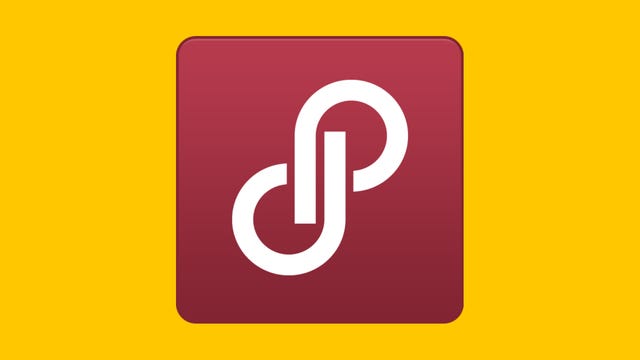Buying new stuff is cool, but if you’re on a budget, you can get some great deals by thrifting. Thrifting, or shopping resale, secondhand, preowned or whatever you call it, has surged in recent years. A 2023 Recommerce report said that 85% of shoppers have now bought and/or sold secondhand goods, including 27% first-timers. The US Census Bureau said that the resale market will have hit $53 billion in 2023. A recent industry report from thredUP estimates that by 2027, resale will have grown nine times faster than the broad retail sector.
Thrifting staples like Poshmark and Depop continue to grow, but individual retailers like Patagonia and H&M are also opening their own secondhand programs. The thing with thrifting is, a first-time buyer may be overwhelmed by the sheer number of products, and the quality concerns that are typically attached to buying preowned goods.

What’s the best way to thrift online? If you’re looking for specific brands, products or sizes, the lack of inclusivity and availability can be disheartening. On top of that, fees can raise price tags and cut into profits for buyers and sellers. We’ve found some thrifting apps are better than others.
Online thrifting may seem like more hassle than it’s worth to you, but you’re not alone. I felt the same way at the beginning of my research. After researching and using nine different apps for a couple of weeks, some longer, I feel confident in saying that if online thrifting is something you want to do, there’s a platform out there best suited for your needs.
Here’s how to find the right online secondhand thrifting app for you.
Other apps we tested
In finding the best, we also researched and tested several other popular thrifting apps. Here’s a quick rundown on each.
Depop and Mercari are both very popular online resale sites, with wide product ranges and millions of users each. Both have similar fees for sellers, with the companies taking 10% of sales and an additional amount in the form of a payment processing fee. For buyers, the ability to chat directly with sellers is a perk, along with wide product availability and standard return policies. Overall, both are good, but there isn’t anything outstanding about them compared with our top picks.
Fashionphile is an online luxury consignment/resale company. Neiman Marcus launched a partnership with Fashionphile in 2019, making Neiman Marcus’ brick-and-mortar stores helpful drop-off/pick-up spots. Sellers make money by selling their products to Fashionphile based on non-negotiable online quotes. Perks for buyers include strong authentication processes and decent product availability.
The RealReal is another online luxury consignment/resale company. It’s had a rough couple of years, internally and externally, most notably an ongoing legal battle with Chanel concerning fake products. For buyers, it’s a straightforward platform with decent product availability and standard return policies. Sellers have several options: to consign items, trade them or sell directly, all of which come with different payout schedules.
eBay, the original resale site, wasn’t included on this list because it’s more of a general resale site, not primarily focused on apparel like the others. It also requires listing fees, or payments to post an item for sale, but it does give sellers an allotment of 250 free listings before those payments kick in. For interested buyers, the major platform might offer unique finds in all categories.
How CNET tests thrifting apps
I tested nine different thrifting apps to determine which were the best. There are lots of thrifting apps available on the market, so there was a set of exclusion criteria in order to make this list as useful as possible. All apps eligible for review had to be resale (not wholesale), have both app and web services, be available on the Apple and Google Play app stores, and must only offer resale services, nothing additional like rental services. These criteria were created in order to ensure the apps included are accessible for users and operate under comparable business models.
When looking at the eligible apps, user experience was key to creating evaluations and rankings. I took the pain points from my own secondhand shopping experience — in real life and online — and evaluated how these apps either alleviated or exacerbated these things. This boiled down to looking at four major areas:
- Fees: For sellers, buyers, listings and any other hidden ones that might be a nasty surprise at checkout.
- Ease of return: How easy is it to return something you bought online?
- Ease of use: How user-friendly is the app, the website? What features do the top apps have that make browsing a pleasant experience?
- Product availability and inclusivity: Do apps who say they have plus sizes actually have them? How many categories and listings do they have?
To get a real sense of the user experience for each app, I made accounts for all the apps included on this list and played around with the personalization options, read help pages and browsed for hours on end. After using them on my own, I also ghosted Reddit threads, read blogs and watched video reviews to get some outside idea of what the known perks and drawbacks are for many of these apps. Due to my own financial limitations, I didn’t purchase anything from these apps, so I wanted to make sure I was understanding the customer experience as well as I could.
There wasn’t a straightforward way to compare the general prices of items across these apps. Instead, I looked at the things that may cause sellers to raise their prices, like fees and shipping costs, and I took note of how frequently sales or discounts were offered — and how you can get your money back in the event of a return. While this doesn’t mean there won’t be an occasional outrageous price tag on any of these apps, this seemed to be a good way to see the clearest comparisons across all the various market factors that determine an item’s price.
Why is thrifting so popular?
There are three general motivations behind thrifting: environmental, social and financial.
Thrifting is an attractive option for eco-conscious shoppers as it can be a more environmentally friendly practice compared with shopping new. The fashion industry is a major polluter, causing global concerns — in 2018, the industry’s total greenhouse gas emissions were equivalent to all of France’s, Germany’s and the UK’s combined. The industry’s water usage and carbon emissions via global shipping are two major concerns.
Thrifting is one way to extend the lives of existing clothing, creating what advocates call a “circular economy.” The basic idea of this cycle is that when clothes are passed on to other consumers, they stay out of landfills and help reduce demand for new clothes — two things that help alleviate fashion’s environmental footprint.
From a social perspective, research has shown that there’s been a significant decline in the stigma surrounding resale in recent years, up to 76% of Americans surveyed in one study. In fact, thanks in large part to Gen Z, thrifting has become a social media trend. Thrifting took off on social media in 2021 as a TikTok trend, with users making trendy #ThriftFlip videos of their best thrift store finds and transformations. As of September 2023, the tag “thrifting” had over 11 billion views on TikTok.
And, for shoppers, thrifting is a great way to save you money. One report estimates you can save nearly $1,800 a year by shopping secondhand.
There have been concerns about the ethical impact the rise of thrifting has had. The increased popularity of thrift stores can lead to increased prices, potentially making these products out of reach for the communities they were originally meant to serve.
Sellers have similar motivations: cleaning out your closet can make room for current trendy pieces; donations or resales can be a more environmentally friendly practice and keep clothing out of landfills; and it can be a great way to make some cash.
Seller and buyer fees by app
| App | Listing fee* | Seller fees** | Buyer fees*** | Who pays for shipping? |
|---|---|---|---|---|
| Poshmark | None | Sales over $15: deducts 20%sales under $15: $3 | None | Buyer |
| Vinted | None | None | Buyer protection: Each sale = 70 cents + 5% of item price | Buyer |
| thredUP | Included in Clean Out kit service fee | $15 + shipping for Clean Out kit | For returns, $4 restocking fee + shipping (exceptions apply) | Buyer for sold items, seller for submitted items |
| Vestiaire Collective | None | Incremental depending on item price | Only in event of needing to relist an item | Buyer |
| Mercari | None | 10% of item price plus processing payment fee of 50 cents + 2.9% of item price | None | Depends — sellers can print labels themselves or have Mercari do it and charge buyers |
| Depop | None | 10% of item price plus payment transaction fee of 45 cents + 3.3% of item price | None | Depends — sellers can cover shipping or have the buyer incur the cost |
| The RealReal | Depends on method of sale: consign/trade/sell | Depends on method of sale | None | Buyer |
| Fashionphile | None | None | None | Sellers for submitted items, buyers for purchased items |
| eBay | Yes after 250 listings | Incremental percentage from 13.25-15% + 30 cents | None | Buyer |
* A listing fee is a one-time amount that a seller must pay in order to post an item for sale.
** Seller fees refer to the costs that sellers will incur once a sale is completed — this does not include any potential shipping costs.
*** Buyer fees refer to any costs buyers incur in addition to an item’s price and shipping.










